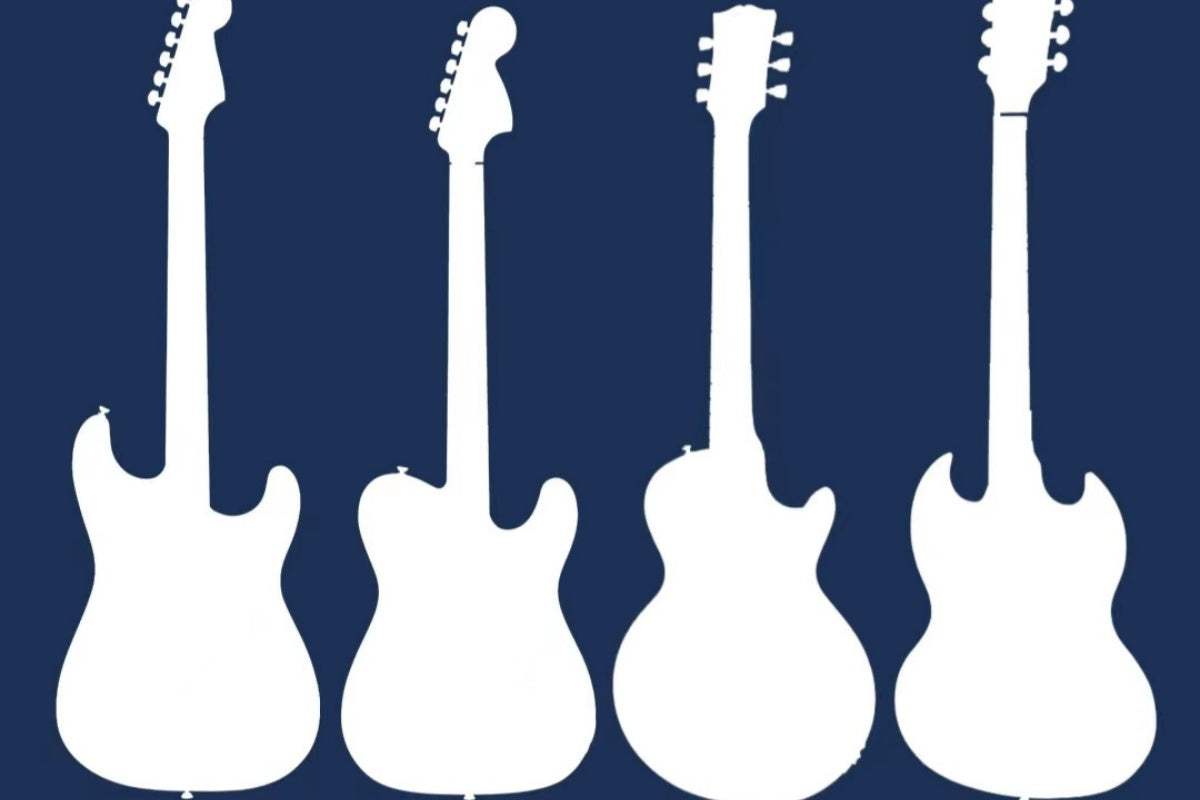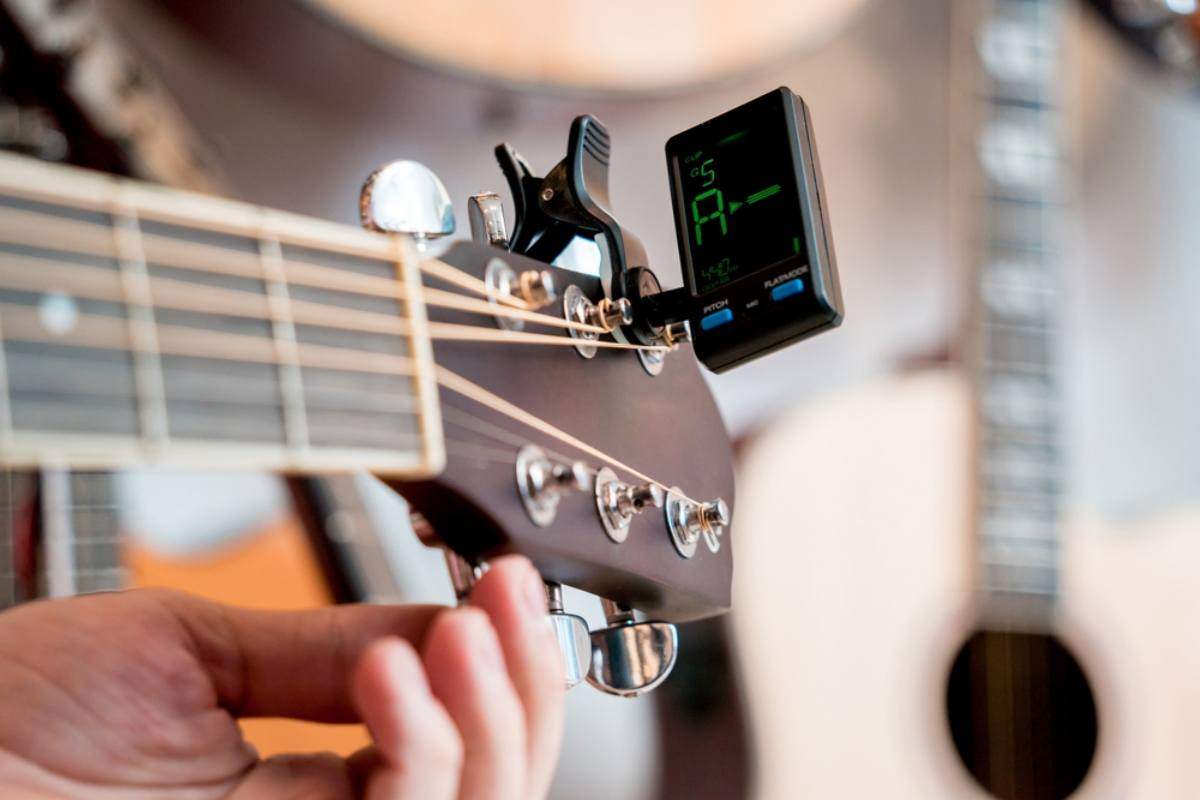Are you having tuning issues? Are the notes on the first fret starting to buzz out? Or, are you simply looking for an inexpensive, yet highly effective way to improve the sound and playability of your guitar? Then it’s probably time to get rid of that old nut and replace it with a new one. Plus, depending on the guitar, a new nut could bring a whole new lease of life to it and vastly improve the tone.
But changing a nut must be complicated? Well no, in fact, it is probably much easier than you think. So, if you have a strat, a tele, or most other Fender guitars - a Jag, Jazzmaster, Mustang, etc., or even a strat/tele copy - it’s time to find out how to change that troublesome nut and replace it with one that performs better as well as improving your tone.
What Tools do I need to change a Strat Nut?
Changing the nut on a strat, a tele, or most other Fender guitars requires the same tools - a ruler, a craft knife, a screwdriver, a small hammer, some 800- or 1000-grit sandpaper, masking tape, wood glue, and a little bit of patience.
Process
Let’s get started…
Remove the strings
After the strings have been removed, use a craft knife with a new sharp blade to lightly score around the base of the nut two or three times. This helps to loosen the nut from the glue that is holding it and ensures that the lacquer coating of the guitar neck does not stick to the nut when you remove it. Be patient with this step, taking your time will ensure a professional-looking job with no need for touch ups.
Remove the nut
Now, get a small-headed flathead screwdriver and carefully place it against the side of the nut. Next, gently tap the screwdriver with the hammer and the nut should slide out of its groove.
Check to see if there is any glue left in the groove of your strat or tele, if so, carefully remove it using the craft knife.
Ensuring a perfect match
Now, measure the height, width, and length of your old nut and compare it with the new one, also noting any curvature. Both nuts need to be as identical as possible. However, if they are not, a little bigger is fine because you can sand it down slightly with 800- or 1000-grit sandpaper, whereas a little smaller will probably mean you have to order another nut.
Shaping and fitting your new nut
If you need to reduce the size of your new nut, then the best method is to attach a piece of sandpaper to a flat surface with some masking tape. Now sand the required edges of the nut slowly and carefully, comparing it to the old nut and regularly placing it on the guitar to see how it fits.
The aim is to get it to be exactly the same height as the old nut and its length to be absolutely flush with the sides of the fingerboard. Patience is the key here, so take things slowly, you can always sand more off, but it’s impossible to put the shavings back on.
It’s now time to see how your brand new nut looks in place, so fit it in the groove and take a look. Does it fit perfectly in terms of width and length? There should be very little wiggle room in its width, and the length should be exactly the same as the width of the neck of your guitar.
Glue it in place
If you’re happy with how it looks and its height then place two small drops of wood glue in the groove and press the nut into it. Clean off any excess glue if necessary, but this shouldn’t be the case, as you really don’t need that much glue to hold it in place. Then let it dry for at least 24 hours.
Do not use superglue or similar products, these will make it much harder to remove the nut in future. A few small spots of normal wood glue will do a great job, there is no need for anything stronger.
One day later and it’s time to put on a new set of strings and see what a difference your DIY skills have made to the guitar. But before you do, add a little graphite (pencil lead) to every nut groove. This helps to lower the friction as the string moves through the groove when you bend it, ensuring increased tuning stability and longer string life.
Here’s one final check for peace of mind, when you press down on the third fret of the top E string there should be a gap of approximately 0.01 of an inch (0.25mm) between the string and the first fret.
What nut should I choose for my Fender Stratocaster?
This will mainly depend on what sound you are going for. Choices include plastic, bone, graphite, wood, various metals, and other materials. Plastic is best avoided and is probably the reason you are thinking about changing the nut. Plastic Nuts produce a dull sound and are not recommended.
A lot of guitarists favorite nut material is bone, such as this excellent Guyker 42/43*3.5mm Bone Nut.

It’s a massive step up from a plastic nut, and you’ll notice the difference as soon as you’ve swopped your nuts over and got those new strings on. You can expect a clearer tone, improved sustain, better intonation, and greater playability. All that for only a few dollars and 30 minutes of your time, well worth it in my opinion.
In terms of metal nuts, there are a few different choices, one is brass, such as either the Guyker Adjustable Bell Brass Nut
or the Guyker Height Curved Adjustable Bell Brass Guitar Nut for ST/TL Electric Guitars.

Brass nuts are renowned for improving note clarity, and have a subtle sound all of their own, so if you’re Stratocaster or Telecaster needs that extra something to stand out from the crowd, a brass nut could well be the answer.
Plus, both these nuts are adjustable, allowing you to get your perfect string height after the nut has been fitted. The first offers basic raising or lowering of both sides of the bridge, the second nut goes one step further and allows you to individually adjust every string to the perfect height.
Or, if you want something more high-tech, how about a Titanium nut, such as the Guyker 42mm Guitar Titanium Alloy Nut which has been specially developed as a direct replacement for a standard strat nut. It will give you all the top-end sparkle you could want from a strat as well as incredible tuning stability and long-term durability.

Wrapping it up
So, that’s it, you should now have a new nut on your guitar and be ready to enjoy the improvement in the way it performs and sounds.
Please share this article if you enjoy it!
Be sure to join our FB Group Guyker Guitar Parts & Accessories Community to share your ideas! You can also have connections with like-minded guitar players, Guyker updates as well as discounts information from our FB Group.





